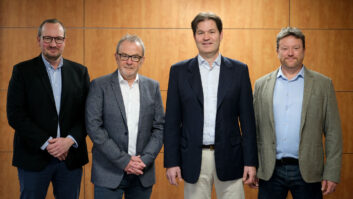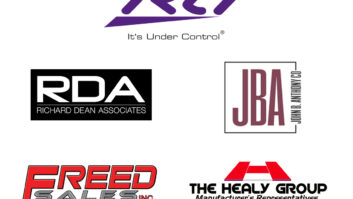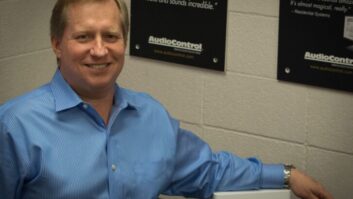Denver — A struggling Ultimate Electronics reported flat fiscal fourth quarter sales, plunging comps and a net loss at the same time the retail chain is attempting to turn its business around in the coming months.
To help re-establish its market position with shoppers and regain the sales momentum lost last year, the retailer has extended its credit facility from $80 million to $100 million, with an option to increase the amount to $125 million. At the same time, it has brought in a turnaround specialist to assist in returning the company to profitability.
Fourth quarter sales at Ultimate reached $243.2 million, compared with $242.5 million in the same three months last year. Comp-store sales for the three months, ended Jan. 31, slid 9 percent. The retailer recorded a $6.3 million net loss for the period, compared with net income of $5.6 million in the year-ago three months.
For the 12 months, Ultimate sales edged upward 1 percent to $712.9 million from $704.4 million the previous year. Comps also dropped 9 percent for the period, while the retailer reported a net loss of $15.8 million, compared with net income of $4.7 million year-on-year. Net income for last year included a $1.6 million charge.
In acknowledging “one of the most challenging periods for our company in recent history,” Dave Workman, president/CEO, said, “We are extremely disappointed with our sales, profit and operating results from last year.”
He explained, “We struggled in the first part of the year with the ineffectiveness of our television advertising campaign, price compression in key product categories, slowing demand in established categories, low consumer confidence, competitive pressures and a dilution of skilled personnel resulting from our recent expansion.”
Workman said these issues were compounded in the third and fourth quarters by unexpected problems following conversion to a new management information system (MIS), which led to problems with inventory visibility, product distribution, commission calculations, reporting and processing of service repairs.
Ultimate managed to keep its gross profit margin relatively stable in the fourth quarter, down to 30.1 percent, compared with a year-over-year 31 percent. But its expenses as a percentage of sales soared in the three months, hitting 34.1 percent, compared with 27.3 percent in the same quarter a year earlier.
Gross profit margins, said Ultimate, were negatively impacted by write-downs associated with the retailer’s exit from the computer category, PlayStation and PDAs, as well as higher inventory shrink associated with the new MIS. This was slightly offset by higher sales of customer services, such as repair and installation.
The company said overall installation, services and delivery sales were up 13 percent in the fourth quarter, accounting for 4 percent of total sales during the year, or about $28 million.
Higher expenses in the fourth quarter were affected by an increase in net ad expenditures year-on-year, and fixed costs such as depreciation and payroll. Also affecting expenses were a $3.1 million asset impairment charge and $600,000 in severance and relocation expenses.
Ultimate’s inventory finished the fiscal year at $113.9 million, up 7 percent, compared with inventory levels at the end of last year. This was due to a shortfall in fourth quarter sales, which, along with capital expenditures for the construction of seven new stores opened in the second half, also accounted for $63.2 million in borrowings at the end of the fiscal year.
Sales by category in the fourth quarter showed the greatest increase in television/DBS, which increased its share to 48 percent from 43 percent. The audio category slipped from a 19 percent share to 18 percent, while video/DVD dropped from 17 percent to 14 percent. The home office share decreased from 3 percent to 1 percent, while mobile increased from 6 percent to 7 percent. The catch-all other category remained steady at 12 percent.
For the 12 months, the television/DBS category increased its share of sales from 41 percent to 45 percent, while audio decreased from 19 percent to 17 percent. Video/DVD declined to 14 percent from 15 percent, and home office from 3 percent to 2 percent. Mobile and the other category remained steady at 9 percent and 12 percent, respectively.
In the 12 months, Ultimate recorded a gross profit margin of 32.2 percent, down from 32.7 percent in the previous period. Expenses for the year climbed to 35.7 percent from 31.2 percent in the previous 12 months. Net ad expenses increased by 1.3 percent year-on-year, due to lower co-op ad credits from vendors and increased ad spending in the fourth quarter.
Ultimate, however, is seeing some early payoff in the new fiscal year, with total sales for February and March down about 6 percent year-on-year; however, comps were off about 15 percent for the first two months. The retailer anticipates comps will remain negative during the first part of the new fiscal year, and it expects company-wide sales and customer service initiatives to help improve sales in the latter part of the year.
“We view fiscal 2005 as a turnaround year for the company,” said Workman. He added that it will “take time to re-establish our market position with customers and regain sales momentum lost during the previous year.” But Workman noted, “We expect our new, four-year $100 million credit facility with our existing lender, coupled with our current cost structure, will provide our company with the additional time needed.”
In a conference call with analysts today, Workman said about the coming months: “The goal, with our initiatives, is slightly negative comps, with breakeven for operating profit, or zero dollars bottom line.” He said he expects revenue to hit $750 million, plus or minus a few dollars, in the current fiscal year.
As for regaining momentum throughout the chain, Workman said, “increasing traffic takes time. So, we want to take existing traffic and convert it to have more immediate impact, to better effectiveness of traffic coming through stores.”
One of the new product categories, DVD software, which now includes 600 titles, will be extended to 1,000 to 1,200 titles by the third quarter in all 65 stores, said Workman, about a category he considers a prime traffic builder.
The chain also continues to add sales to its builder division, a positive operation that accounts for about 3 percent to 4 percent of overall Ultimate sales and operates at gross margins approaching 46 percent to 47 percent. “This division posts big numbers in the second half tied to the home-building cycle,” said Workman, who sees opportunity for growth in this category — one that offers differentiation from competitors.
Workman went on to say that although Ultimate has corrected most of its system issues, it still is encountering problems with its MIS related to inventory and distribution. “But the vast majority of MIS issues have been remedied,” he told analysts. “We continue to work through, to remedy the last few remaining issues. We understand what the issues are, and these are drawing to a close. It’s primarily getting the right product to the right stores at the right time.”
Responding to a question about Ultimate’s recent 10-store entry into the Dallas-Ft. Worth market — which he described as challenging — Workman acknowledged that the company would likely open one or two fewer stores when penetrating new markets. Separately, CFO Alan Kessock noted that the company would review every aspect of all of its leases, aided by newly named consultant and advisor Peter G. Hanelt, who had previously assisted Good Guys in its turnaround bid.













